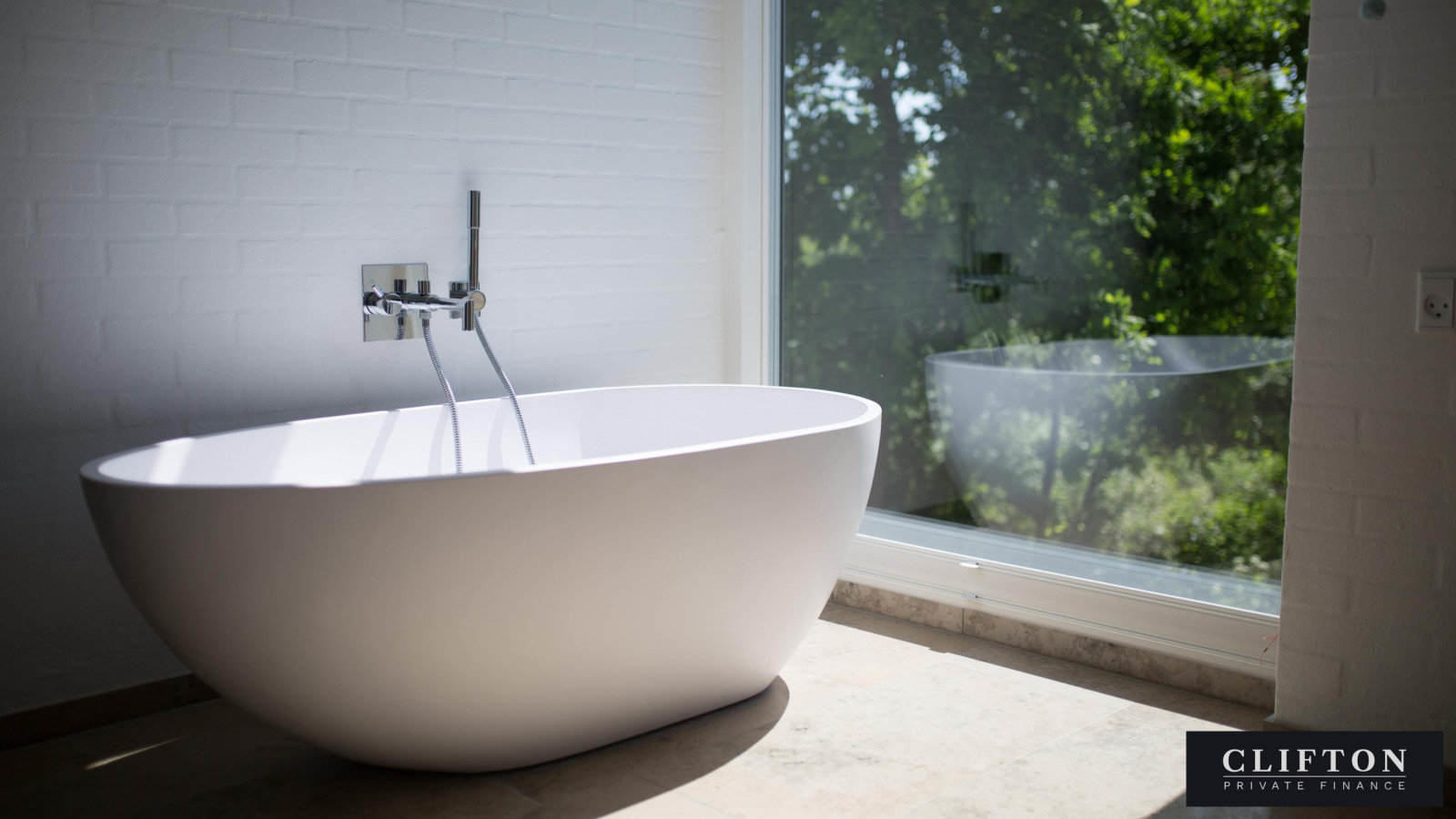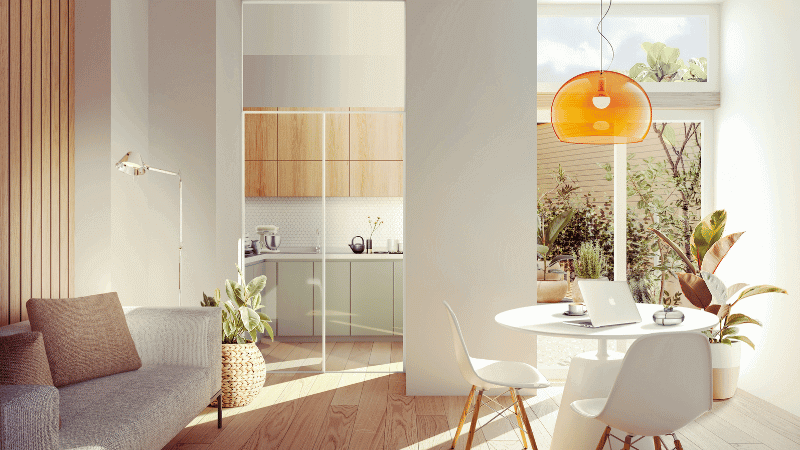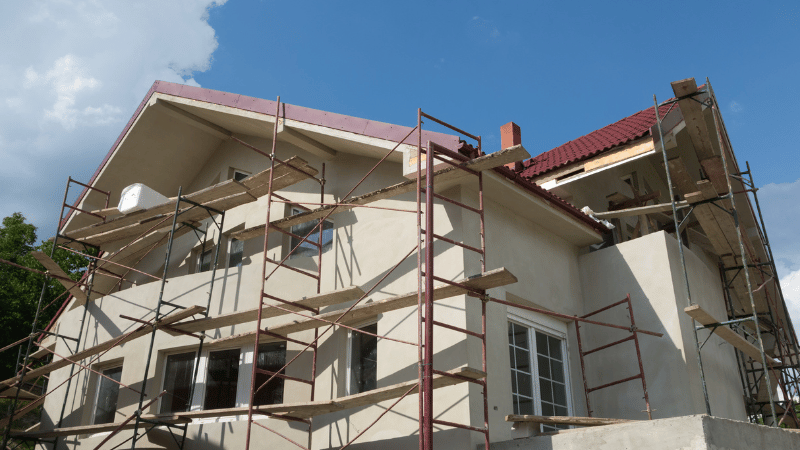Categories
How to get a large home improvement loan

When the property market looks uncertain, many homeowners choose to stay put and improve rather than sell-up to upgrade.
Adding value to your home which you can recoup when you sell can pay for the cost of the borrowing, as well as allowing you to enjoy a more spacious and up-to-date home in the meantime.
Which improvements add value?
An updated home is a pleasure to live in, and may suit your family’s needs for the years ahead, but be clear about the purpose of your investment and focus your spending first on the improvements which will appeal to future buyers and not just your own needs.
- The basics: upgraded heating, electrics, double glazing
- Add a bedroom: promotes you to a new real estate listing category (loft conversions cost £500-£600 per sq m)
- Add bathrooms: a ratio of one to three bathrooms to bedrooms is a minimum, a downstairs cloakroom is almost a necessity, walk-in shower rather than over-bath
- Add space: a rear extension
- Update the kitchen: modernkitchens have selling-appeal with a dining area, island bench, computer workstation
- Extend into the outdoors indoors: add a conservatory, bi-fold doors from kitchen / living room to garden, decking to create an impression of expanded living space

What’s the best loan for home improvements?
1 Pay for building works on your credit card
This may well be the first option you consider: it’s quick and convenient, and doesn’t need to be set up.
- Unless you’re a platinum card holder, even a £10-£15,000 credit card limit may not cover the cost of the works you’re planning.
- If you withdraw payments in cash from your card account you’ll incur cash charges of around 3% (plus a fixed charge each time).
- You won’t be creating the necessary paper trail for the tax office, and if payments need to be challenged at a later stage.
- Credit card borrowing is expensive: average credit card lending rates are currently around 18-19%APR.

2 Take out a personal loan
You can ask your own bank, or any lender, for a straightforward loan:
- You can usually apply online
- You may get same-day approval
- Rates may be as low as 2.8% (going up to around 13%)
- This is an unsecured loan that isn’t tied to the value ofyour home: if you can’t repay, the lender doesn’t have the automatic right to claim your home.
- The usual personal loan limit is around £25K.
- Repayment periods are usually up to 5 years - which could be too soon for you to repay the full amount.
- The lowest rates are usually for larger loans of £15-£25K. (In general, it "costs less to borrow more".)

3 Apply for short-term property finance
A bridging loan, or "bridge finance" may be the most effective borrowing if you’re renovating a property that’s not your home, with a view to selling it on or refinancing it as a buy-to-let.
- If the property isn’t currently in a "mortageable condition" (it doesn’t have a working kitchen or bathroom), a bridging loan can finance the purchase and renovations until it’s in a condition to be mortgaged.
- Regulated bridging finance on residential properties is usually limited to a 12-month term, which makes it expensive, and puts pressure on your building schedule.
- Every bridging loan needs to have a clearly defined “exit strategy” (means of repaying it) agreed at the outset. If you’re not planning to sell, or rent out the property, there may not be sufficient added value in the renovations to make the affordability calculations work against your level of income.
4 Get a further advance on your current mortgage, or remortgage
Many property owners assume that adding the additional borrowing they need onto their current mortgage is the most straightforward solution. But:
- Your current lender may not agree
- You may already be borrowing to the full extent of your affordability
- If you’re currently on an advantageously low fixed rate, you will lose it.
- Having an expanded loan at a higher mortgage rate may be much more expensive for you than leaving your main mortgage untouched and just arranging finance for your additional borrowing needs at a higher rate.
5 Take out a second charge mortgage
A second charge mortgage, also known as a homeowner's loan or a secured loan, uses the value of your home as security for the lender.
It’s called a second charge mortage because this lender comes second in line for repayment after your first mortgagor (if for any reason you’re unable to repay and they’re going to sell your home to reclaim the debts).
- It doesn’t affect your original mortgage.
- The repayment period is much longer – up to the term of a standard mortgage (25 years).
- Your original mortgagor does have to agree to a second charge being attached to the property.
- The rate for this borrowing will be higher than for your main mortgage, reflecting the lender’s greater risk.
- Paying a higher rate of interest over a full mortgage term does make this an expensive type of borrowing, though you may not feel the effect in the monthly payments.
- This “secured” borrowing: the security is for the lender, which makes it riskier for you because in the last resort they can sell your house to get their money back. So this is not a decision to be taken lightly - you should explore all the other options first.
| Value of property | £850K |
| Current mortgage (capital & repayment, 20-year term) @ 2.14% | £400K |
| Loan needed (new kitchen and bathroom, garden landscaping) | £100K |
| Current monthly mortgage costs | approx.£2,000 |
| Monthly second charge loan costs (capital & repayment, 20-year term) @ 3% | £691 |
| Total monthly repayments | £2,691 |
|
After 5 years… |
|
| They’ve spent £100K on their home and increased its value. Current value: | £1M+ |
| They’ve paid off £84,600 on their main mortgage. It’s now: | £315,400 |
| They’ve paid off £28,500 on their second charge loan. They now owe: | £71,500 |
|
Total £386,900 |
|
|
With their current mortgage deal ended, and no ERCs payable on their second charge loan, they can increase their borrowing on their main mortgage to pay off their second charge (we’ll assume they get the same rate: 2.14%) |
|
| Total monthly repayments after 5 years | £2,500 |
|
But they now have only one mortgage debt and have substantially increased the value of their home |
These are indicative costs only
What to look at when comparing the cost of borrowing for home improvements
- Don’t just look at the headline interest rates. Look at the repayment period and additional charges such as valuation costs and loan set-up fees.
- 5% over 20 years is more expensive than 10% over five years.
- What will be the interest cost for you, over the period you realistically expect to repay this debt?
- Are there any other extra costs: like needing to increase your life assurance because you’ve increased your mortgage?
- Will you be allowed to repay the loan sooner without penalty charges, such as by increasing the amount of your original mortgage when it comes time to renew it.
- Will your original mortgage lender agree to this additional borrowing, and your plan for repaying it?
Contact Clifton Private Finance to discuss how you can pay for home improvements
We will discuss your plans with you, and suggest the most affordable borrowing available to you. Call us to arrange a suitable time for a detailed conversation.









